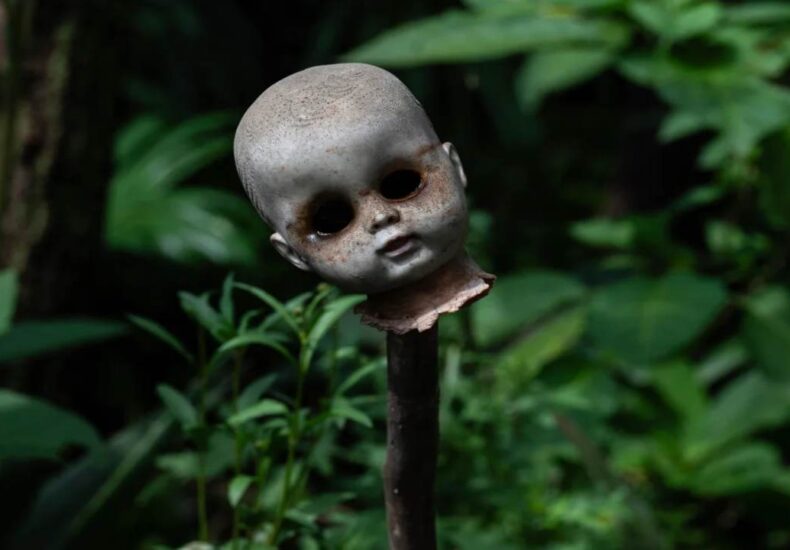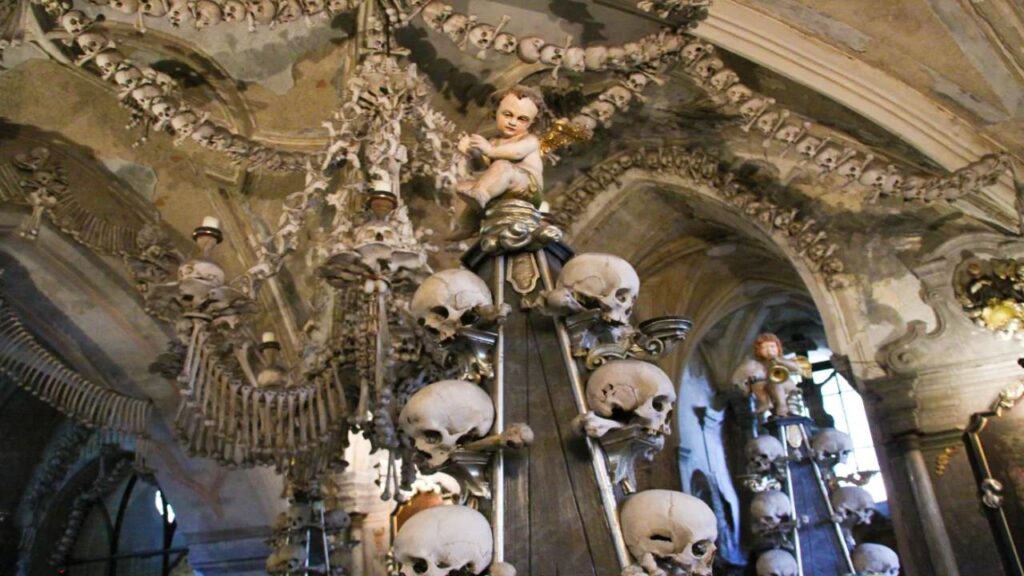
7 of the World’s Freakiest Places You Can Actually Visit
Fundacion Rapala – When discussing the World’s Freakiest Places, curiosity and fear always have a strange relationship. Around the world, tourists are increasingly drawn to places filled with the terrifying and unexplained. From bone-filled chapels to burning craters in the desert, these destinations go beyond Halloween gimmicks. They are authentic places where history, death, and myth intertwine. As someone fascinated by how places preserve their mysteries, I believe exploring them isn’t about chasing fear it’s about understanding humanity’s endless dance with mortality and the unknown. These are not just ghost stories; they are reminders of how fragile and fascinating our world truly is.
Sedlec Ossuary – The Church Built from Bones
In Sedlec, a small Czech town, lies a chapel that redefines sacred art. The Sedlec Ossuary contains the bones of nearly 70,000 people, arranged into chandeliers, pyramids, and wall decorations. What seems macabre was born from practicality so many faithful wanted burial in soil from Golgotha that the chapel ran out of space. Monks exhumed old graves and turned the remains into haunting works of devotion. Standing inside, one senses reverence, not horror. To me, the Ossuary reflects how even in death, humans seek beauty and meaning. It’s both unsettling and deeply spiritual a gallery of mortality carved from faith itself.
Bell Witch Cave – Tennessee’s Southern Gothic Legend
Hidden in Adams, Tennessee, the Bell Witch Cave tells one of America’s oldest supernatural tales. In the 1800s, the Bell family endured terrifying hauntings said to be caused by a vengeful spirit named Kate Batts. She tormented them relentlessly and allegedly killed John Bell, the family patriarch. The legend became so infamous that even President Andrew Jackson reportedly fled after one night. Today, visitors can explore the family’s old cabin and the cave said to house the witch. The silence inside is heavy almost alive. Whether you’re a skeptic or believer, the Bell Witch Cave feels like a place where folklore refuses to die.
La Isla de las Muñecas – The Island of the Dolls
Deep in the canals of Xochimilco, Mexico, floats one of the world’s most unsettling places La Isla de las Muñecas, or The Island of the Dolls. For fifty years, Don Julian Santana lived there alone, hanging broken and decaying dolls from trees after finding a drowned girl nearby. He believed her spirit haunted the island, so he offered the dolls as companions. The result is chilling yet strangely touching: a forest of cracked faces and hollow eyes swaying in the wind. When I visited, the air felt heavy with both sorrow and devotion. It’s a haunting monument to love, loss, and madness.
“Read More : Trump Urges Israel to Stop Gaza Bombing, Says Hamas Ready for Peace”
Hashima Island – Japan’s Ghost City at Sea
Just off Nagasaki’s coast lies Hashima Island, or Gunkanjima, meaning “Battleship Island.” Once a booming coal-mining colony in the 1950s, it became a ghost town after the mines closed in 1974. The abandoned concrete buildings now stand as relics of industrial ambition and collapse. Visiting feels like entering a post-apocalyptic film silence fills the ruins where thousands once lived. Interestingly, the island was featured as a villain’s hideout in James Bond’s Skyfall. Today, it’s a UNESCO World Heritage Site, open to tourists brave enough to step into its haunting emptiness. It’s proof that progress, when forgotten, becomes its own ghost.
Paris Catacombs – The City Beneath the City
Far below Paris’s bustling streets lies a chilling underworld the Catacombs. Created in the late 18th century to house remains from overflowing cemeteries, it now contains the bones of more than six million people. Rows of skulls line the narrow tunnels, forming a silent empire of the dead. As you descend 131 steps underground, the noise of the city fades, replaced by an eerie calm. I’ve always felt that the Catacombs reveal Paris’s dual nature: elegance above, eternity below. It’s both art and ossuary, a powerful reminder that beneath beauty often lies the weight of history.
Poveglia Island – Venice’s Forbidden Ground
Amid the serene Venetian Lagoon lies Poveglia Island, a place so haunted that locals refuse to go near it. Once a quarantine site for plague victims in the 18th century, it later became an asylum where, legend says, a deranged doctor met his end after tormenting patients. Attempts to transform it into a resort have failed almost as if the island resists redemption. Even from a distance, its abandoned bell tower feels menacing. For me, Poveglia embodies the dark side of Venice’s beauty a reminder that paradise often hides its pain behind calm waters.

Darvaza Crater – The Gateway to Hell in Turkmenistan
In the heart of Turkmenistan’s desert, a fiery pit known as the Darvaza Crater has burned for over 50 years. Formed in 1971 when Soviet engineers accidentally ignited a natural gas pocket, it’s now called The Gateway to Hell. Standing on its edge at night is hypnotic the flames roar endlessly, casting a glow visible for miles. Scientists say it may soon extinguish, but for now, it remains one of the planet’s strangest wonders. To me, the crater symbolizes both human error and nature’s power. It’s terrifyingly beautiful a place where science and myth meet in eternal fire.
Why We’re Drawn to the Dark and the Mysterious
So, why do travelers seek places that unsettle them? Perhaps because darkness offers its own kind of truth. These eerie destinations remind us that beauty and fear often coexist. From bone chapels to burning deserts, they reflect humanity’s fascination with what lies beyond control. As a writer who’s explored some of these sites, I’ve learned that the most haunting places aren’t just about death they’re about life’s persistence amid decay. Visiting the world’s freakiest places isn’t about chasing horror; it’s about witnessing the strange poetry of existence itself.